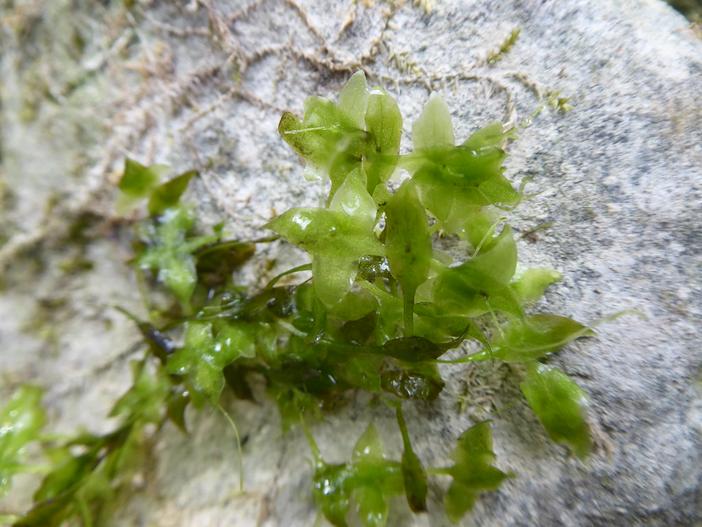Star Duckweed
(Lemna trisulca)
Star Duckweed (Lemna trisulca)
/
/

Thibault Lefort
PDM 1.0
Image By:
Thibault Lefort
Recorded By:
Copyright:
PDM 1.0
Copyright Notice:
Photo by: Thibault Lefort | License Type: PDM 1.0 | License URL: https://creativecommons.org/publicdomain/mark/1.0/ | Uploader: Thibault Lefort | Publisher: Flickr
















































Estimated Native Range
Summary
Lemna trisulca, commonly known as Star Duckweed, is a deciduous perennial herb native to a wide range of freshwater habitats including ponds, lakes, and slow-moving streams across the Northern Hemisphere. It is unique among duckweeds for having submerged fronds, which are oblong-lanceolate and can grow up to 14 mm long. The fronds typically remain submerged, rising to the surface only during flowering or fruiting. Star Duckweed is capable of both wind and insect pollination. Its flowers are small and not particularly showy, and it reproduces mainly by vegetative growth, forming dense mats on the water’s surface.
Star Duckweed is valued in cultivation for its ability to form thick patches that suppress algae and weed growth, contributing to water clarity and ecosystem health. It is hardy and adaptable, thriving in both shaded and sunny conditions, and can tolerate a range of soil pH levels, although it prefers acidic conditions. It is often used for ground cover in water gardens and as an ornamental feature in ponds. In cultivation, it requires aquatic conditions with standing water and can grow in full sun to full shade. While it is low maintenance, it can become invasive in some conditions, spreading rapidly and potentially outcompeting native aquatic plants.CC BY-SA 4.0
Star Duckweed is valued in cultivation for its ability to form thick patches that suppress algae and weed growth, contributing to water clarity and ecosystem health. It is hardy and adaptable, thriving in both shaded and sunny conditions, and can tolerate a range of soil pH levels, although it prefers acidic conditions. It is often used for ground cover in water gardens and as an ornamental feature in ponds. In cultivation, it requires aquatic conditions with standing water and can grow in full sun to full shade. While it is low maintenance, it can become invasive in some conditions, spreading rapidly and potentially outcompeting native aquatic plants.CC BY-SA 4.0
Plant Description
- Plant Type: Herb
- Height: 0-0.1 feet
- Width: 0.1-0.1 feet
- Growth Rate: Rapid
- Flower Color: N/A
- Flowering Season: Spring
- Leaf Retention: Deciduous
Growth Requirements
- Sun: Full Sun, Part Shade, Full Shade
- Water: Aquatic
- Drainage: Standing
Common Uses
Bird Garden, Low Maintenance, Water Garden
Natural Habitat
native to a wide range of freshwater habitats including ponds, lakes, and slow-moving streams across the Northern Hemisphere
Other Names
Common Names: Ivy-Leaf Duckweed, Ivy-Leaved Duckweed, Narrow-Leaf Duckweed, Kors-Andemad, Dreifurchige Wasserlinse, Ristilimaska, Lenticule Trisulquée, Lenticule À Trois Lobes, Lenticule À Trois Pointes, Lenticule Étoilée
Scientific Names: , Lemna trisulca, Staurogeton trisulcus, Lenticula trisulca, Lemna triscula, Lemna intermedia, Lemna trisculca, Lemna trisulca var. pygmaea, Lemna trisulca var. sagittata, Hydrophace trisulca
GBIF Accepted Name: Lemna trisulca L.